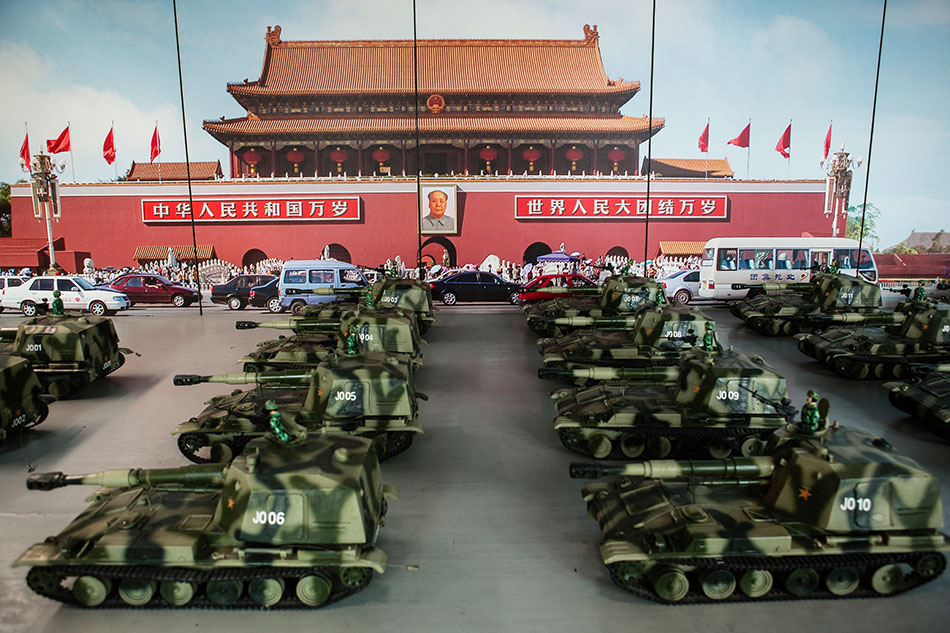Fisher: Harper should use trip to China to learn more about Beijing’s military might

The F-35 jet (pictured above) bears a resemblance to the J-31 fighter jet, that China will unveil at the Zhuhai Air Show next week..PHOTO: POSTMEDIA NEWS/FILES




HANGZHOU, China — Prime Minister Stephen Harper is in China over the next few days to improve economic relations, and will leave the country before Beijing proudly unveils its stealthy J-31 fifth-generation fighter jet at the Zhuhai Air Show next week.
But learning what he can about the J-31 during a five-day visit to China, that began in the Pacific port city Hangzhou on Thursday, might help the prime minister understand why it is necessary to soon end the Royal Canadian Air Force reliance on outdated, third-generation fighter technologies and acquire a stealthy jet.
Viewed from below, the J-31 appears to be a shameless copy of the F-35 Joint Strike Fighter which Canada is considering purchasing, although the newest Chinese jet incorporates design features from the even more expensive F-22 stealth fighter. So, in other ways, does China’s other, bigger stealth jet, the J-20.
“They sure look like F-35s and F-22s don’t they?” an Air Force test pilot told the United States Naval Institute’s USNI News earlier this week.
As for the innards of the warplanes that will likely form the backbone of the Chinese air force for the 30 or 40 years, it has been reported for several years that the Chinese successfully penetrated the F-35 program at Lockheed, stealing among other things its base code. As a result of this cyber espionage, the base code had to be re-written, which is one of many reasons for the cost increases and delays in the JSF program.
While certain aerodynamic similarities might be expected, what has been seen in photographs of the J-31 almost certainly go beyond that. As noted by USNI News, its nose and trapezoidal wings resemble the stealthy F-22 while its air intake, wing dimensions and twin tail are like the F-35.
As a friend of mine, whose academic background is in fighter aircraft and aviation technology, pointed out after reading the most recent spate of stories about the J-31 and J-20, stealing aircraft and rocket designs is a very old business “that when done right can work wonders for the country playing catch-up. Look at the U.S. ballistic missile and space programs, which got a 10 to 15 year leap out of the V2 rockets and the German scientists who came with it.”
On the other side of the same fence, Russia’s Tu-154 airliner was a rough copy of the Boeing 727 and the profile of the Il-62 airliner was remarkably like Britain’s VC-10. But stolen plans can go awry.
Russia’s supersonic Tu-144 was a virtual copy of the Anglo-French Concorde. But because the stolen plans came from early aerodynamic data that proved faulty, the Tu-144 had a tendency to crash and had to immediately pulled from service forever.
The worry for Harper and other western leaders is the consensus in the West that the Chinese, unlike the Russians, are much more likely to be able to match the West in quality and sophistication, particularly in the areas of computers and sensors. Although still years behind in many areas, including jet engine design and top end avionics, industrial espionage allows China to play catch-up awfully fast, and they have a huge pool of highly skilled — and motivated — technical people to call on.
Test pilots have already told U.S. aviation magazines that they believe that China’s two Chinese fifth-generation fighters will be able to handle current fleets of western warplanes including Canada’s Cold War-era CF-18s, which Ottawa intends to fly for another decade, and the F-18 Super Hornets that some have suggested the Harper government should buy instead of the F-35.
This can hardly be surprising as the Chinese are jumping two generations in fighter jet technology while many of the West’s current fighters — and all of Canada’s — are based on designs that were hatched more than 40 years ago.
What really scares informed western observers is the number of stealthy jets that China may be able to produce and where some of them may end up. Having saved billions in research costs and with a much lower cost workforce and huge financial reserves, Beijing can to afford to pump out thousands of fifth-generation aircraft and is developing a program to export some of them to Third World countries whose air forces Canada could conceivably face in the future, as demonstrated by the RCAF’s current air campaign over Iraq and previous ones against Libya and Serbia.
Western options have been seriously complicated by the fact that the U.S. wars in Iraq and Afghanistan have sucked so much money out of the American budget that the replacement of a lot of military equipment has been put back for years. Faced with these multiple whammies, the West must therefore purchase the very best aircraft it can, even if budget constraints mean they are acquired in limited numbers.
A final point (or warning): Although China faces huge economic and social challenges that may cause domestic political upheavals, its government does not face re-election. Nor are its military procurement policies vulnerable to the whims of congress, parliaments and election year politics.
The Harper government must of course emphasize and encourage trade with China, which is what this visit is all about. But at the same time, Canada must remain mindful of what Beijing’s rapidly growing military is building (there are long-range missiles, submarines and aircraft carriers, too) and the strains its robust territorial claims in the South China Sea and East China are causing Ottawa’s many Pacific allies.
No comments:
Post a Comment
Comments always welcome!